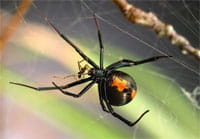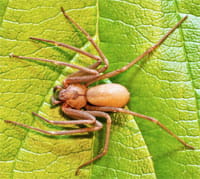First Aid
Some products can be fatal if swallowed. Too much medicine can also be life threatening, especially to children.
- If the person is not breathing, start artificial respiration and call 911.
- If the person is conscious, check to see if the person can swallow.
- Do NOT make the person vomit or give syrup of ipecac. In some cases vomiting can cause more damage.
- Identify what product the person swallowed, how much and when.
Call the poison center at 1-800-222-1222. The specialist will determine if further treatment is needed.
Some products can actually take your breath away when inhaled.
While some can be fatal, others may cause only degrees of coughing and shortness of breath. These symptoms may worsen over time.
- If the person is not breathing, start artificial respiration and call 911.
- If the person is conscious, remove the person from the area.
- Avoid breathing fumes yourself.
- Help the person to get fresh air.
- Open doors and windows wide and turn on fans if indoors.
- Try to identify what the person inhaled and how long the person was around the product.
Call the poison center at 1-800-222-1222. The specialist can determine if further treatment is needed.
Some products are very strong and can cause permanent injury to the eye and may need to be treated in the emergency room. Other exposures may be managed at home with a proper eye flush.
- Flood BOTH eyes with warm water (not hot). This can be done in the shower by directing the shower stream to the forehead area and letting the water run into both eyes. Blink eyes open and shut.
- Repeat and continue for 15 minutes.
- Have the person blink as much as possible while flooding the eyes.
- Do not force the eyelid open.
- Identify the name of the product and when this happened.
Call the poison center at 1-800-222-1222. The specialist can determine if further treatment is needed.
Some products are very strong and can cause burns to the skin.
While some products can be treated at home, others may need further treatment in the emergency room.
- Remove contaminated clothing immediately.
- Identify area of skin involved.
- Rinse well. Flood skin with running water for 10-15 minutes.
- Identify the name of the product and when this happened.
Call the poison center at 1-800-222-1222. The specialist can determine if further treatment is needed.
Some products injected into layers under the skin or into a vein can be fatal. It is important to always call the poison center if something has accidentally been injected or if the person was trying to inflict harm to himself or herself.
- If the person is not breathing, start artificial respiration and call 911.
- Find out the name of the product, how much was injected and when.
- Identify symptoms the person is having.
Call the poison center at 1-800-222-1222. The specialist can determine if further treatment is needed.
Treatment for bites and stings varies greatly depending on what caused the symptoms. Therefore, it is always important to call the poison center for specific treatment.
- If the person is not breathing, start artificial respiration and call 911.
- Move the person to a safe area away from additional harm.
- Identify what caused the bite or sting and when this occurred.
- Identify symptoms the person is having.
Call the poison center at 1-800-222-1222. The specialist can determine if further treatment is needed.
Spotlight on Spiders
Black Widow

These spiders are commonly found in the United States and are known for large webs in dark places like garages, wood piles, outdoor toilets and patio furniture. This spider has a body that is shiny black with a red to orange-red hourglass shape on its back. The widow spider may produce effects ranging from mild redness to a lesion several inches in size with a central puncture site, inner blanching and an outer reddened ring. The bite is often initially painful within 30-120 minutes. Painful cramping can proceed to boardlike rigidity, weakness, difficulty breathing, headache and paresthesias.
Brown Recluse

The brown recluse spider is found in the central and southeastern United States. This spider is approximately 1 inch in length or smaller and is light to dark brown in color. It has a characteristic violin or fiddle shaped marking on its back. These spiders hunt at night and do not like being around people. Brown recluse spiders are best known for causing slowly healing skin ulcers. Poisoning usually produces a painful burning sensation at the bite site within 10 minutes, but can be delayed. One to two hours after the bite, a “bull’s eye” lesion forms, consisting of a blanched ring enclosed by a ring of reddened areas.



